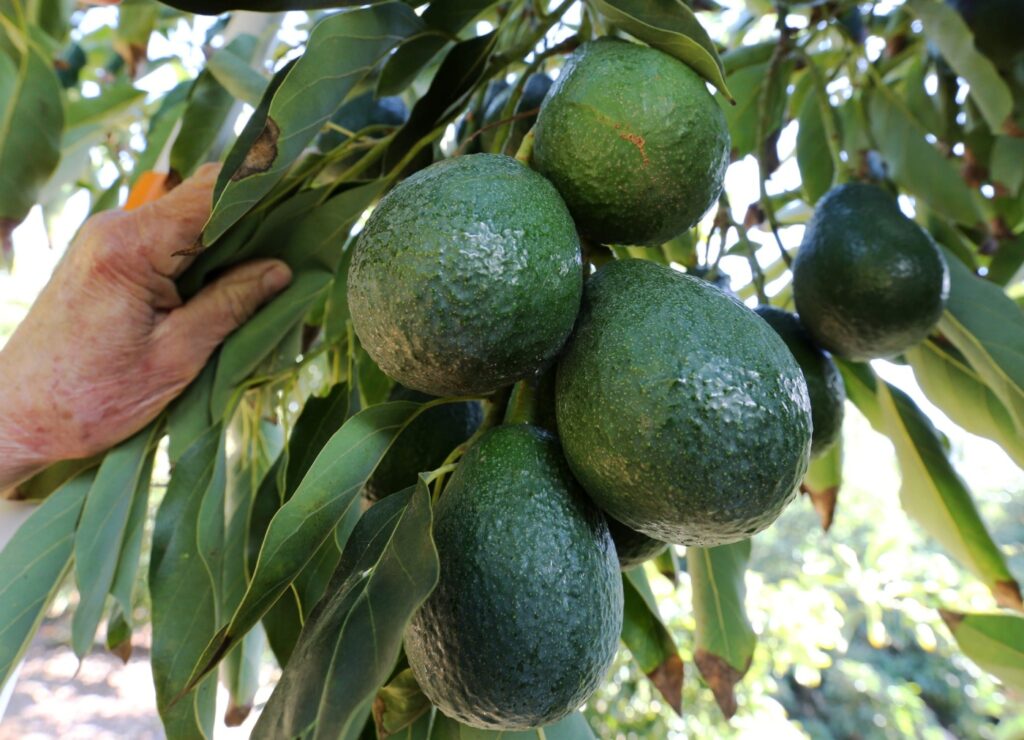
If you plan on growing avocadoes or even if you are already growing them, I highly recommend visiting the website of Greg Alder (gregalder.com). It would appear to be the definitive website for backyard avocado growers.
The website includes Alder’s experiences growing a large variety of fruit and vegetable crops, yet one customary gardening practice is barely mentioned. That practice is fertilization.
Alder makes a statement that many would consider astonishing. In all his years of growing avocadoes, he has never fertilized a single tree. Never. I remember working in avocado grove management in Temecula many years ago. Temecula is not far from Fallbrook, a locale considered the epicenter of avocado growing in California. In any event, I remember providing one fertilizer or another to the trees, applied through a drip irrigation system, no less than twice a month.
“I’ve never applied fertilizers to any of my trees because they’ve never told me they’ve needed anything more than the deep mulch of wood chips,” Alder relates.
“As for how much organic matter to add to the surface under your avocado tree, that’s hard to calculate with any precision. I personally don’t even try. My approach is to merely make sure that the soil is always covered. As soon as the mulch layer thins out, I add more materials. But for my first application under a tree, I put it down about a foot in depth.
Alder also writes that you will need to use less mulch as time goes by, saying it won’t be used up as quickly after a while.
“Keep a layer at least two inches thick of wood chips under the tree at all times,” Alder advises. “This protects and feeds the worms and microbial creatures in the soil below, which in turn protect and feed the tree’s roots. With this mulch, it’s very possible that you will not need any additional fertilizer.”
Alder writes that the layer where the mulch and soil meet will start to resemble forest soil after a few years if you keep it covered.
He also cites the Bnei-Dror experiment conducted in Israel. “Fuerte avocado trees were given chemical fertilizer or composted animal manure, and results were observed for ten years. The trees given composted manure grew more slowly but produced an average of 50 percent more avocados.”
If decomposing organic matter is sufficient for fertilization of fruit trees, how much more so is this true regarding the vast majority of ornamental plants which, by contrast, are light feeders. Let’s say you live in a condominium complex with lots of large trees that need pruning on a regular basis. As long as you recycle your tree trimmings as mulch around your ornamental shrubs and perennials, you will never need to fertilize them.
In Loren Zeldin’s Reseda garden, among the hundreds of rose and iris varieties that he cultures to perfection, two self-sowing annuals are happily growing together. One is annual delphinum (Consolida ajacis), also known as larkspur, and the other is opium poppy (Papaver somniferum). The larkspur is showing off long wands of purple blooms while the large, spherical poppy inflorescences are pink and red. Most of Zeldin’s irises are the bearded kind (Iris germanica), but he also has a flourishing patch of the more understated spuria type (Iris spuria).
Iceland poppies (Papaver nudicaule) are also flowering now and will self-sow given richly composted soil. Meanwhile, California poppies (Eschscholzia californica) are displaying their vivid blooms and, by removing them as they fade, you will be rewarded with another wave of silky orange flowers.
Related Articles
8 nostalgic garden flowers worth revisiting for charm, aroma
How to use less water to care for your lawn with this helpful tip
Hollywood ‘fixer’ seeks design help to downsize and fix up a fixer
Ferns, roses and sweet potatoes: Things to do in the garden this week
Papayas, persimmons and figs: Tips for trees in your garden
Every plant has its moment, and the moment for fortnight lilies, also known as Moraea (Dietes spp.) or butterfly iris, is now. Most of the year, this species is nothing but a collection of stiff, narrow, nondescript evergreen leaves. But then suddenly you are transported to a dreamy place where butterflies, conjured up by Moraea’s flowers, reign supreme.
There is a simple, yet brilliant display of color at the corner of Tyrone Avenue and Moorpark Street in Sherman Oaks. The orange version of yellow bells (Tecoma stans), which flowers throughout the year, is underplanted to cherry red ivy geraniums (Pelargonium peltatum), another virtually non-stop bloomer.
There is a Mother’s Day Weekend Show and Sale of the Geranium Society on May 7th and 8th from 9 a.m. – 4 p.m. in Ayers Hall at the Los Angeles County Arboretum, 301 North Baldwin Avenue in Arcadia. The show is free with arboretum admission. Admission tickets must be purchased online at arboretum.org.
Please send questions, comments, and photos to [email protected].
